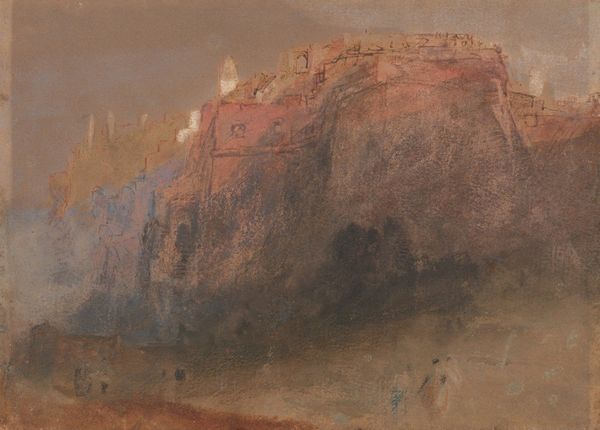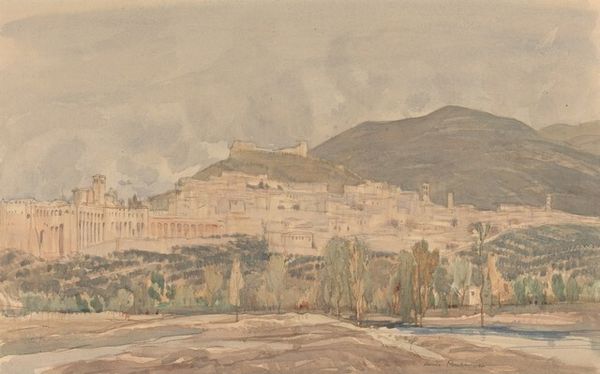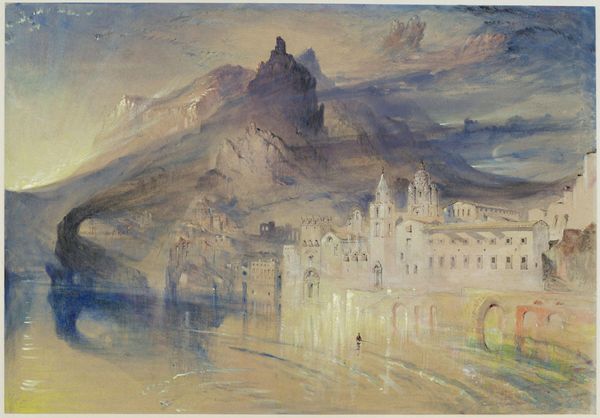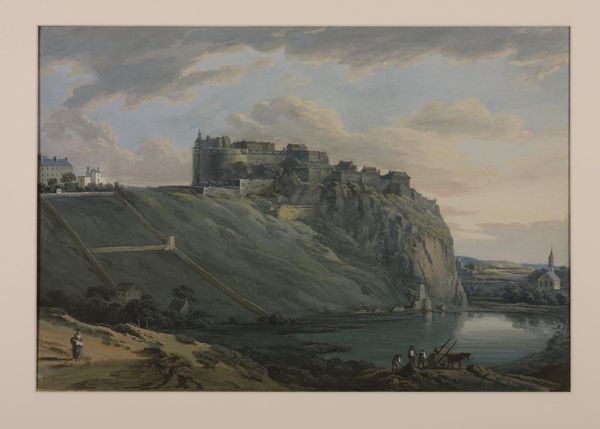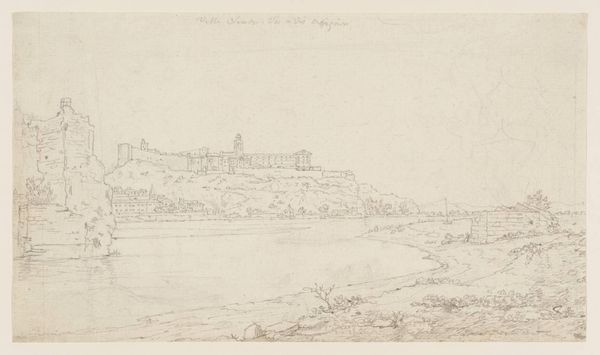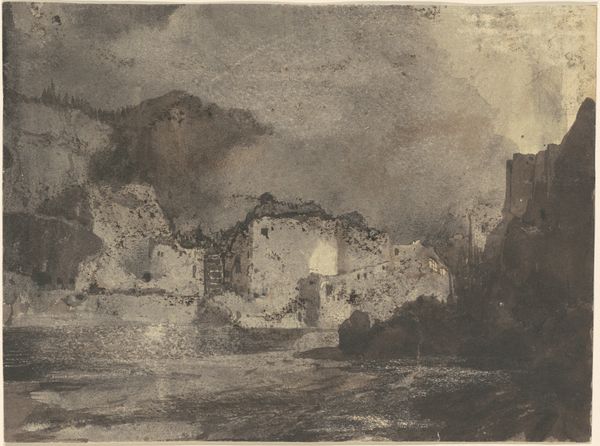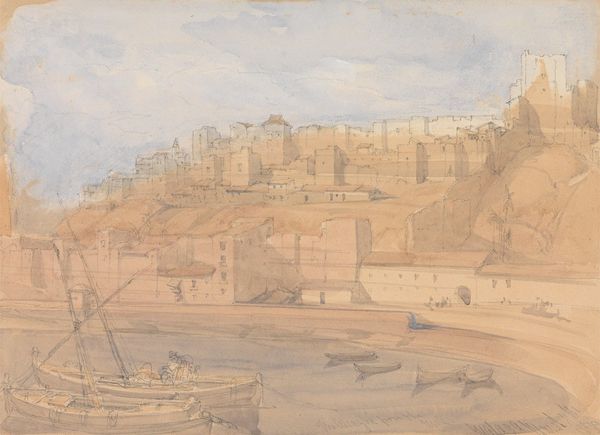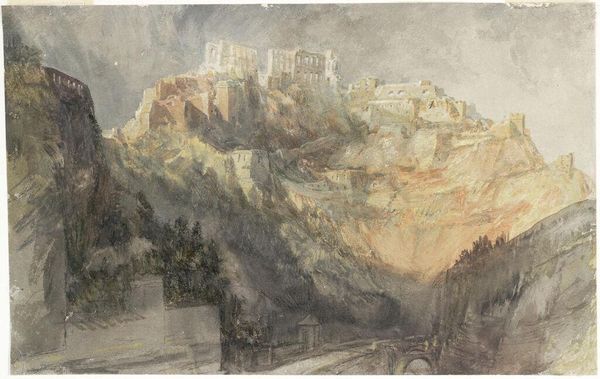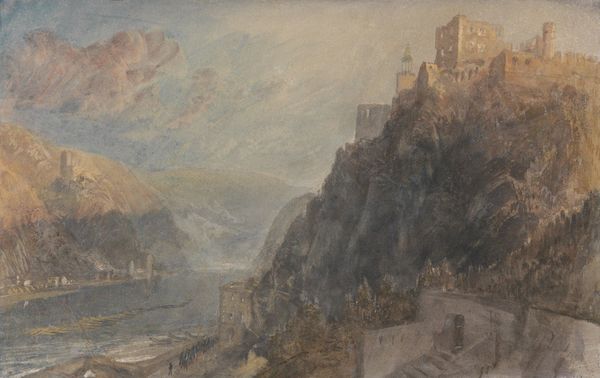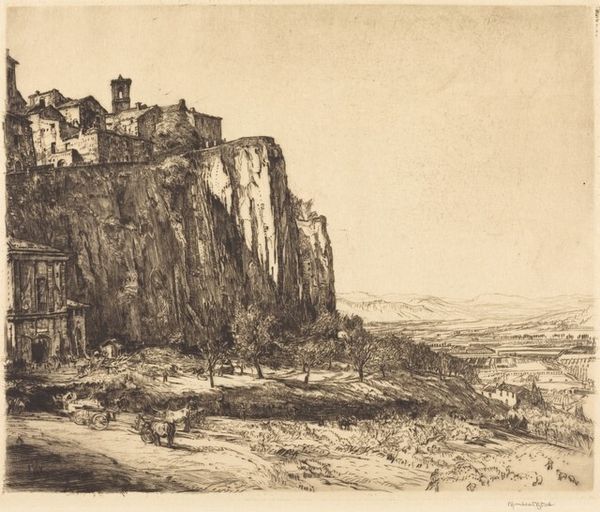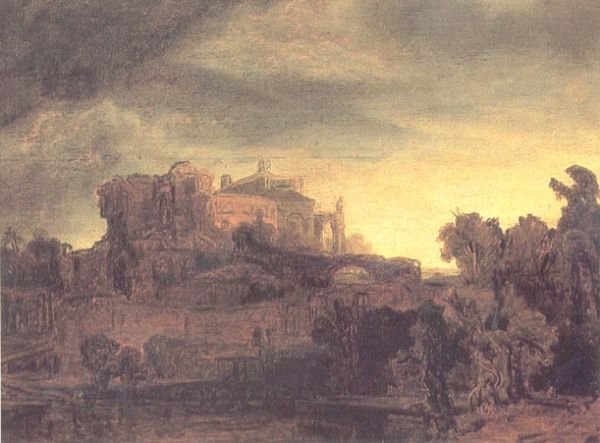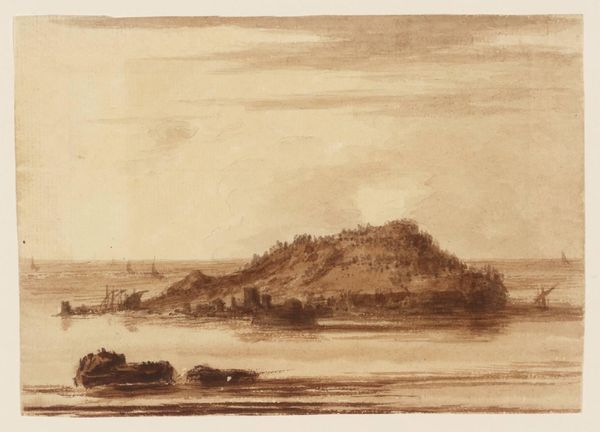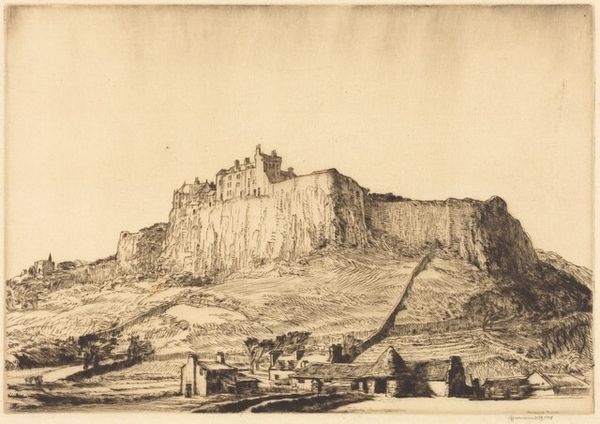
plein-air, watercolor
#
plein-air
#
landscape
#
watercolor
#
romanticism
#
cityscape
#
watercolor
Copyright: Public Domain: Artvee
Curator: J.M.W. Turner’s watercolor, "Corsica," painted sometime between 1830 and 1835, depicts the island, a strategic and historically significant location in the Mediterranean. Editor: My first thought is somber. The limited palette and muted tones lend it a somewhat melancholy air, despite the idyllic subject matter. Curator: Well, consider the island's history. Corsica has been a site of contention for centuries, shifting between different rulers and powers, with complex issues regarding identity and national belonging. Editor: And this artistic interpretation relies heavily on its material construction. Turner’s visible layering of watercolor—he manipulated the flow of the pigment on the paper to emphasize form and atmosphere, and its effect evokes a sense of maritime toil. Curator: Indeed, situating Turner within the broader context of Romanticism highlights his fascination with sublime landscapes, which in turn are entangled with themes of power and the human relationship with nature. Editor: Exactly, and think about watercolor as a material choice: Relatively portable and immediate, implying the artist experienced this scene directly, grounding the romantic landscape in the physical act of its production. The evidence of Turner's hand is very apparent here. Curator: And yet, there’s something unresolved here; an unease stemming from the ambiguous relationship between the colonizer's gaze and the landscape itself. Even if Turner aims for sublime beauty, questions of representation and power linger. Editor: Yes, and that materiality tells a social story, too. Turner was experimenting constantly with the latest developments in pigments and paper manufacturing, aligning artmaking to scientific and commercial practices. Curator: Looking at Turner’s "Corsica" from an intersectional perspective reveals layers of meaning related to place, power, and identity, asking us to confront not just the aesthetic beauty of the scene, but its complex social and historical framework. Editor: A perspective echoed through the ages—where the physical realities of material resources shape both our understanding of the art itself and of the larger systems that allow for art's making and consumption. Curator: Ultimately, grappling with the questions this artwork provokes allows for a more critical understanding of how art both reflects and influences societal power structures. Editor: And through studying the nuances of its physical creation we appreciate that "Corsica" serves not just as art, but as record of the human experience across materials and places.
Comments
No comments
Be the first to comment and join the conversation on the ultimate creative platform.
